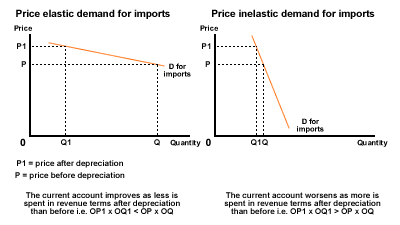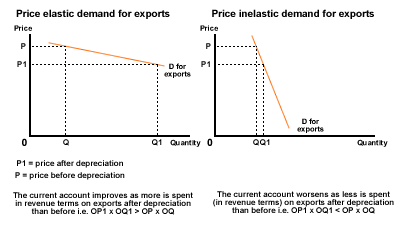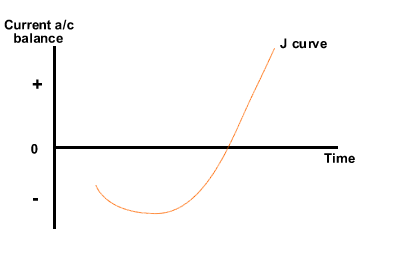Marshall-Lerner condition


Marshall-Lerner condition
The Marshall-Lerner condition refers to the impact of a depreciation, or devaluation, of a currency on the current account of the balance of payments. The condition states that the current account will improve, after a depreciation, if the sum of the price elasticities of demand for imports and exports is greater than 1. The further above 1 the sum of the elasticities is, the greater the improvement in the current account will be.
Marshall-Lerner condition - explanation

The depreciation of a currency will increase import prices and decrease export prices. Therefore, the more price elastic the demand for imports and exports, the greater will be the fall in demand for imports and the increase in demand for exports and the greater will be the improvement on the current account.

J-curve
Evidence around the world suggests that the Marshall-Lerner condition does not hold in the short-run, but does in the medium- to long-run. This is because in the short-run, there will be few extra exports sold when prices fall - people overseas do not react immediately and so export demand will take time to change. However, extra money will have to be paid for imports immediately and so the current account will tend to deteriorate. In the medium term, however, the lower export prices will lead to an increase in demand for exports and so the current account will start to improve. The price elasticity of demand for exports is lower in the short-run, but will be higher in the long-run.
This leads to the pattern shown in Figure 1 below - an initial deterioration of the trade balance followed by an improvement.

Figure 1 J-curve

